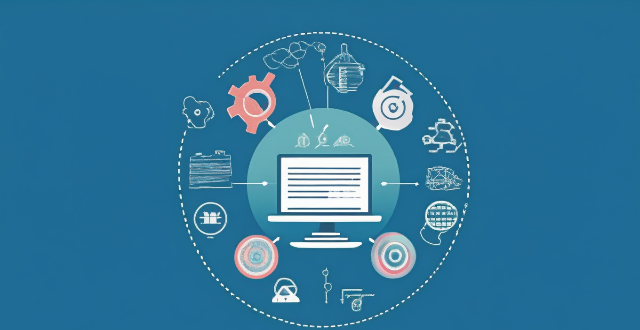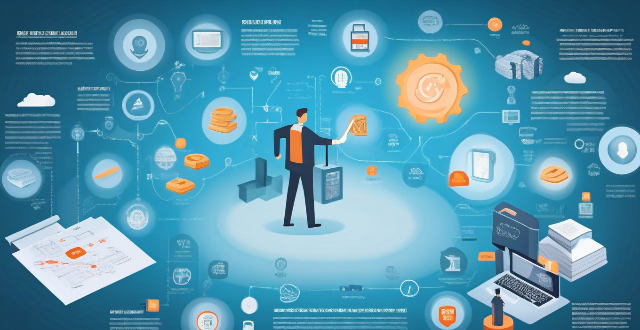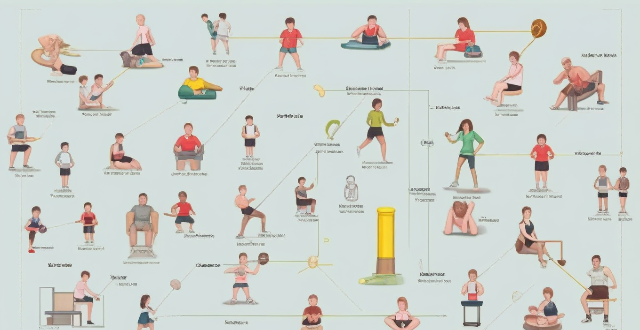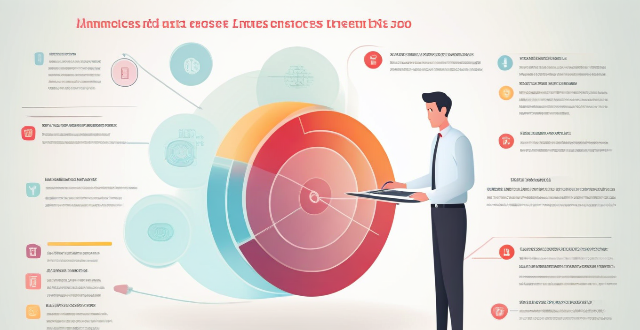Customer Monitoring

What is credit monitoring and why is it important in credit management ?
Credit monitoring is the process of tracking and analyzing a borrower's credit history, including payment behavior, outstanding debts, and changes in credit scores. It is important for early warning signals of potential default or delinquency, accurate risk assessment, fraud prevention, customer relationship management, and compliance with regulations. By continuously monitoring a borrower's credit history, lenders can update their risk assessments, prevent fraud, tailor their products and services to better meet their customers' requirements, and ensure they are meeting regulatory requirements.

How can automation be used to improve customer service ?
Automation can significantly enhance customer service by streamlining processes, reducing errors, and providing consistent support. It enables personalized communication through chatbots and email automation, efficient processes via self-service options and backend automation, a consistent experience with standardized responses, cost-effective solutions through scalability, and continuous improvement using feedback loops. As technology progresses, the potential for automation in customer service will continue to expand, leading to more innovative ways to meet customer needs.

How does Fintech improve customer experience in banking ?
Fintech has transformed the banking industry by providing innovative solutions that improve customer experience. It offers personalized services, faster transactions, enhanced security, and innovative features. Fintech companies provide a seamless user interface, personalized financial advice, customized products, faster transactions, instant access to information, streamlined processes, robust security measures, transparent fees, regulatory compliance, mobile payments, peer-to-peer lending, crowdfunding, and exploration of cryptocurrencies and blockchain technology. These advancements have significantly improved customer experience in banking and will continue to shape the future of banking as technology evolves.

How can sports marketing help to build customer loyalty ?
Sports marketing is a powerful tool that can build customer loyalty by leveraging the emotional connection between fans and their favorite teams. Strategies include sponsorships, promotions, giveaways, and social media engagement to create a sense of shared identity and community among customers. Examples include Nike's sponsorship of the Brazilian national football team, Coca-Cola's partnership with the Olympic Games, Budweiser's "Up for Whatever" campaign, McDonald's "McRib" promotion during the World Series, ESPN's social media presence, and Red Bull's extreme sports content on social media channels. By establishing themselves as trusted partners of popular sports teams and events, businesses can increase customer loyalty and brand recognition.

How do I contact customer service for my mobile operator ?
How to Contact Customer Service for Your Mobile Operator

How does climate change affect the priorities in environmental monitoring ?
Climate change significantly impacts the priorities in environmental monitoring by necessitating a focus on rising sea levels, extreme weather events, changes in biodiversity, impacts on agriculture and food security, and air quality issues. Addressing these challenges requires a comprehensive approach that incorporates regular monitoring, early warning systems, adaptation strategies, and effective conservation planning.

What are the main challenges faced in implementing effective environmental monitoring programs ?
Main challenges faced in implementing effective environmental monitoring programs include limited funding, technological barriers, data management issues, legal and regulatory compliance hurdles, lack of public awareness and engagement, the unpredictability of natural variability, and difficulties in accessing remote or politically sensitive monitoring sites. Addressing these challenges through strategic planning, collaboration, and investment in technology and training can enhance the effectiveness of such programs.

How can I compare different online shopping sites for their customer service ?
In this article, we discuss how to compare different online shopping sites for their customer service. The first step is to research and gather information by reading reviews and testimonials, checking social media presence, and asking for recommendations from friends or family. The second step is to analyze the information by comparing customer service options, evaluating response time, and assessing quality of service. The final step is to make a decision based on weighing pros and cons and trying before you buy. By following these steps, you can choose an online shopping site that offers excellent customer service and meets your needs.

How often should air quality monitoring be conducted ?
Air quality monitoring is crucial for ensuring safe and healthy air, with the frequency of such monitoring influenced by various factors. Urban areas typically require daily monitoring due to high pollution levels, while rural areas may only need weekly or monthly checks. Special situations, like emergencies or natural disasters, might necessitate continuous monitoring. The goal is to balance between tracking long-term trends and identifying short-term spikes in pollution, all while considering available resources.

Can sport monitoring technology help prevent injuries ?
Sport monitoring technology has become increasingly popular in recent years, with many athletes and coaches using it to improve performance and prevent injuries. This technology includes wearable devices such as fitness trackers, heart rate monitors, and GPS tracking systems, as well as more advanced technologies like motion capture systems and force plates. Sport monitoring technology works by collecting data on an athlete's movements, heart rate, and other physiological factors. This data is then analyzed to provide insights into the athlete's performance and identify areas where they may be at risk of injury. By tracking an athlete's movements and physiological factors, sport monitoring technology can identify potential injury risk factors early on, help coaches create personalized training plans for each athlete based on their individual needs and abilities, monitor recovery periods between sessions, and educate athletes and coaches about injury prevention strategies. Overall, there is evidence to suggest that sport monitoring technology can help prevent injuries in several ways. However, it is important to note that no technology can completely eliminate the risk of injury, and proper training, conditioning, and safety measures should always be prioritized.

Which shopping apps have a strong focus on customer service and support ?
The provided text discusses the importance of customer service and support in shopping apps. It then goes on to highlight five notable shopping apps—Amazon, Shopify, Etsy, eBay, and Alibaba—that prioritize these aspects. Each app is described in terms of its unique features and services that enhance user experience. For Amazon, it's the live chat and email support, 24/7 availability, and the Mayday button for Fire devices users. Shopify is praised for its multichannel support, extensive knowledge base, and active community forums. Etsy is lauded for its personalized assistance, seller education, and resolution center. eBay's detailed resolution process, security measures, and seller protections are highlighted. Lastly, Alibaba is commended for its Trade Assurance program, legal services, and supplier verification. In conclusion, these shopping apps understand the significance of supporting their users throughout the shopping journey, each offering unique strengths in customer service and support.

What kind of customer feedback has been received so far for the new product ?
The new product has received mostly positive feedback, withThe new product has received mostly positive feedback, with user-friendly interface, speed However, there have been concerns about compatibility issues, software bugs, and pricing. Some customers also mentioned the need for additional features and improvements in customer support services. Overall, the feedback will be used to make necessary improvements and meet customer expectations.

Can heart rate monitoring help prevent overexertion during exercise ?
Overexertion during exercise can lead to fatigue, muscle soreness, and injuries. Heart rate monitoring is a technique used to measure the number of times a person's heart beats per minute (bpm). By monitoring your heart rate, you can determine personalized training zones based on age, fitness level, and goals, providing real-time feedback on current heart rate during exercise. Recovery time is essential for preventing overexertion, and heart rate monitoring helps determine how long it takes for the body to return to its resting state. Best practices for heart rate monitoring include choosing the right device, calibrating regularly, warming up properly, staying hydrated, and listening to your body. Following these guidelines and listening to your body can help prevent overexertion during exercise while maximizing its benefits.

What is air quality monitoring and why is it important ?
Air quality monitoring is crucial for public health, environmental protection, and socio-economic decision making. It involves measuring pollutants like particulate matter, nitrogen dioxide, sulfur dioxide, carbon monoxide, and ozone to assess their impact on human health, the environment, and society. Poor air quality can cause respiratory diseases, cardiovascular problems, nervous system disorders, developmental issues in children, and increase cancer risks. It also contributes to acid rain, ozone depletion, habitat destruction, and global warming. Socio-economically, poor air quality leads to increased healthcare costs, lost work days, reduced tourism, and lower property values. Air quality monitoring data helps individuals make informed decisions, governments create regulations, and influence public policy.

What is the importance of long-term monitoring and evaluation in climate policy ?
The importance of long-term monitoring and evaluation in climate policy is discussed. Long-term monitoring and evaluation help ensure accountability for climate action, identify gaps and opportunities for improvement, inform future policies, build public trust, and promote sustainable development.

What are the benefits of monitoring heart rate during exercise ?
Monitoring your heart rate during exercise offers numerous benefits, including improved workout efficiency, better recovery, reduced risk of injury, increased motivation, and improved cardiovascular health. By keeping an eye on your heart rate, you can ensure you're getting the most out of every workout while also taking care of your body.

What are the different types of sensors used in environmental monitoring ?
Environmental monitoring involves the use of various sensors to collect data on different environmental parameters. These sensors include temperature sensors, humidity sensors, pressure sensors, light sensors, and chemical sensors. Temperature sensors measure the temperature of the environment and are crucial for monitoring weather patterns, climate change, and the impact of human activities on the environment. Humidity sensors measure the moisture content in the air and are essential for monitoring weather patterns, air quality, and the impact of human activities on the environment. Pressure sensors measure the force per unit area exerted by a fluid or gas and are crucial for monitoring weather patterns, air quality, and the impact of human activities on the environment. Light sensors measure the intensity and wavelength of light in the environment and are essential for monitoring solar radiation, atmospheric conditions, and the impact of human activities on the environment. Chemical sensors measure the presence and concentration of specific chemicals in the environment and are crucial for monitoring air and water quality, soil contamination, and the impact of human activities on the environment. Overall, these sensors help us understand the state of our environment and take necessary actions to protect it.

What is credit management ?
Credit management is the process of managing and controlling the use of credit by individuals or businesses. It involves evaluating borrowers' creditworthiness, determining the amount of credit to extend, monitoring loan repayment, and taking action for late payments. Key components include credit analysis, evaluation, loan monitoring, collections management, risk management, and customer relationship management. Effective credit management benefits include reduced default risk, improved cash flow, increased customer satisfaction, and enhanced reputation.

How do sports monitoring systems analyze muscle activity and fatigue ?
Sports monitoring systems analyze muscle activity and fatigue by employing various technologies and methodologies, including: 1. Electromyography (EMG) to measure electrical muscle activity and detect fatigue indicators. 2. Heart rate monitoring to track intensity, recovery, and heart rate variability (HRV). 3. Accelerometry to track motion patterns and assess fatigue through changes in movement quality. 4. Force plates and pressure mats for measuring ground reaction forces and load distribution. 5. Blood lactate testing as a metabolic indicator of anaerobic metabolism and fatigue. 6. Perception-based scales like Ratings of Perceived Exertion (RPE) for subjective feedback on exertion levels. 7. Sleep tracking to monitor sleep duration, quality, and rest disruptions. 8. Environmental monitoring to account for external conditions affecting performance and fatigue. These systems provide valuable insights into an athlete's performance, enabling coaches and athletes to adjust training regimens, prevent overtraining, and enhance overall sports performance.

How do communication satellites enable real-time data transmission and monitoring ?
Communication satellites play a crucial role in enabling real-time data transmission and monitoring by serving as relay stations in space that can receive signals from one location on Earth and transmit them to another location. This is achieved through a complex system of technology, infrastructure, and protocols. Satellites are positioned in orbits around the Earth, either in geostationary orbit (GEO) or lower Earth orbit (LEO). Geostationary satellites remain fixed over a specific point on the Earth's surface, while LEO satellites move relative to the Earth's surface. The process begins when a signal, such as a phone call, internet data, or video feed, is generated at a source location. The signal is then sent via a ground station, which has powerful transmitters and antennas, up to the communication satellite using radio waves. Once the satellite receives the signal, it amplifies and frequencies it to avoid interference with other signals. The amplified signal is then transmitted back down to Earth, where another ground station receives it. Finally, the received signal is distributed to its intended destination, such as a phone network, the internet, or a monitoring station. Real-time monitoring is facilitated by the speed at which data can travel via satellite. With modern technology, latency (the time delay in signal transmission) can be minimized, especially with LEO satellites due to their closer proximity to Earth. Satellites can also be networked to provide redundancy and increased bandwidth for large-scale monitoring systems. Key technologies and infrastructure include ground stations, satellite design, network protocols, and satellite constellations. However, there are challenges and considerations such as weather impact, geographical constraints, and regulatory issues. In summary, communication satellites enable real-time data transmission and monitoring by acting as high-altitude relay stations, utilizing advanced technologies and infrastructure to deliver signals across vast distances with minimal delay.

What is the role of biometric monitoring in athlete health and fitness ?
Biometric monitoring is a valuable tool for athletes to optimize their performance, recovery, and overall well-being. By collecting and analyzing data related to an individual's physical characteristics, such as heart rate, skin temperature, and body composition, athletes can gain insights into areas where they may need improvement or make adjustments to their training regimen. Biometric monitoring can also help athletes monitor their recovery from workouts and competitions, optimize their training regimens, prevent injuries, and enhance their overall well-being. Overall, biometric monitoring plays a crucial role in athlete health and fitness by providing valuable insights into performance, recovery, training regimens, injury prevention, and overall well-being.

How can companies improve their products based on customer reviews ?
Companies can improve their products by listening to customer reviews, addressing negative feedback, encouraging constructive criticism, implementing continuous improvement, and leveraging positive reviews. This involves analyzing feedback using NLP tools, categorizing issues, prioritizing actions, investigating complaints, implementing fixes, communicating changes, creating a supportive environment for honest feedback, establishing a feedback loop, iterating rapidly, monitoring progress, highlighting strengths, celebrating successes, and maintaining quality. By doing so, companies can enhance their offerings and stay relevant in the market.

Are there any risks associated with constantly monitoring heart rate during exercise ?
Monitoring heart rate during exercise is common but can pose risks like over-reliance on technology, psychological impacts, and physical risks. It's important to find a balance between using heart rate data and listening to your body's signals for a safe and enjoyable workout.

Is there a difference between consumer-grade and professional-grade sports monitoring equipment ?
This article explores the differences between consumer-grade and professional-grade sports monitoring equipment, focusing on accuracy, features, durability, and price. It provides examples of both types of devices, highlighting their key characteristics and target audiences.

How can technology help in designing and monitoring a sports training plan ?
Technology has revolutionized sports training, allowingTechnology has revolutionized sports training, allowing workout programs through wearable devices allowing for more personalized and efficient workout programs through wearable devices, data analytics, and virtual training environments. It aids in designing training plans by collecting performance data, tracking movement patterns, simulating game scenarios, and customizing regimens based on individual needs. Technology also enhances monitoring progress with real-time feedback, recovery management tools, and adaptive goal setting features. These advancements provide valuable insights that traditional methods cannot match, shaping the way athletes reach their peak performance.

What role does artificial intelligence play in Fintech ?
The Role of Artificial Intelligence in Fintech Artificial intelligence (AI) has revolutionized the financial technology (Fintech) industry by making financial services more efficient, personalized, and accessible. AI is used in various ways in Fintech, including risk management and fraud detection, personalized customer experience, automated trading and investment management, credit scoring and loan approvals, and regulatory compliance and reporting. These applications have improved the accuracy and speed of financial processes, reduced costs, and enhanced customer satisfaction. As AI technology continues to advance, it will likely lead to even more innovative applications in Fintech.

What is the difference between credit management and debt collection ?
Credit management and debt collection are two distinct processes that involve handling financial transactions between a business and its customers. While both are crucial for maintaining a healthy cash flow, they serve different purposes and require different approaches. Credit management refers to the process of managing the risks associated with extending credit to customers, while debt collection involves recovering outstanding debts from customers who have failed to make payments as agreed upon. Both processes are essential for maintaining a healthy cash flow and ensuring the financial stability of a business.

How does network expansion impact customer experience ?
Network expansion improves customer experience by increasing coverage, reducing disconnections, boosting speed and reliability, and enhancing accessibility to services and devices.

How do you measure the success of a sports marketing campaign ?
Measuring the success of a sports marketing campaign is crucial. Metrics include increased brand awareness, improved sales and revenue, customer loyalty, enhanced brand image, media coverage, sponsorship value, and positive stakeholder feedback. These metrics provide insights for adjusting strategies.

How can I effectively manage a sports facility ?
Managing a sports facility effectively requires a mix of administrative skills, customer service, and industry knowledge. Key steps include developing a business plan, hiring qualified staff, maintaining cleanliness and safety, offering diverse services, implementing efficient scheduling systems, fostering community building, staying updated with industry trends, focusing on customer service, managing finances wisely, and continuously monitoring performance to make necessary adjustments. Following these guidelines ensures an enjoyable environment for members and the long-term success of the facility.